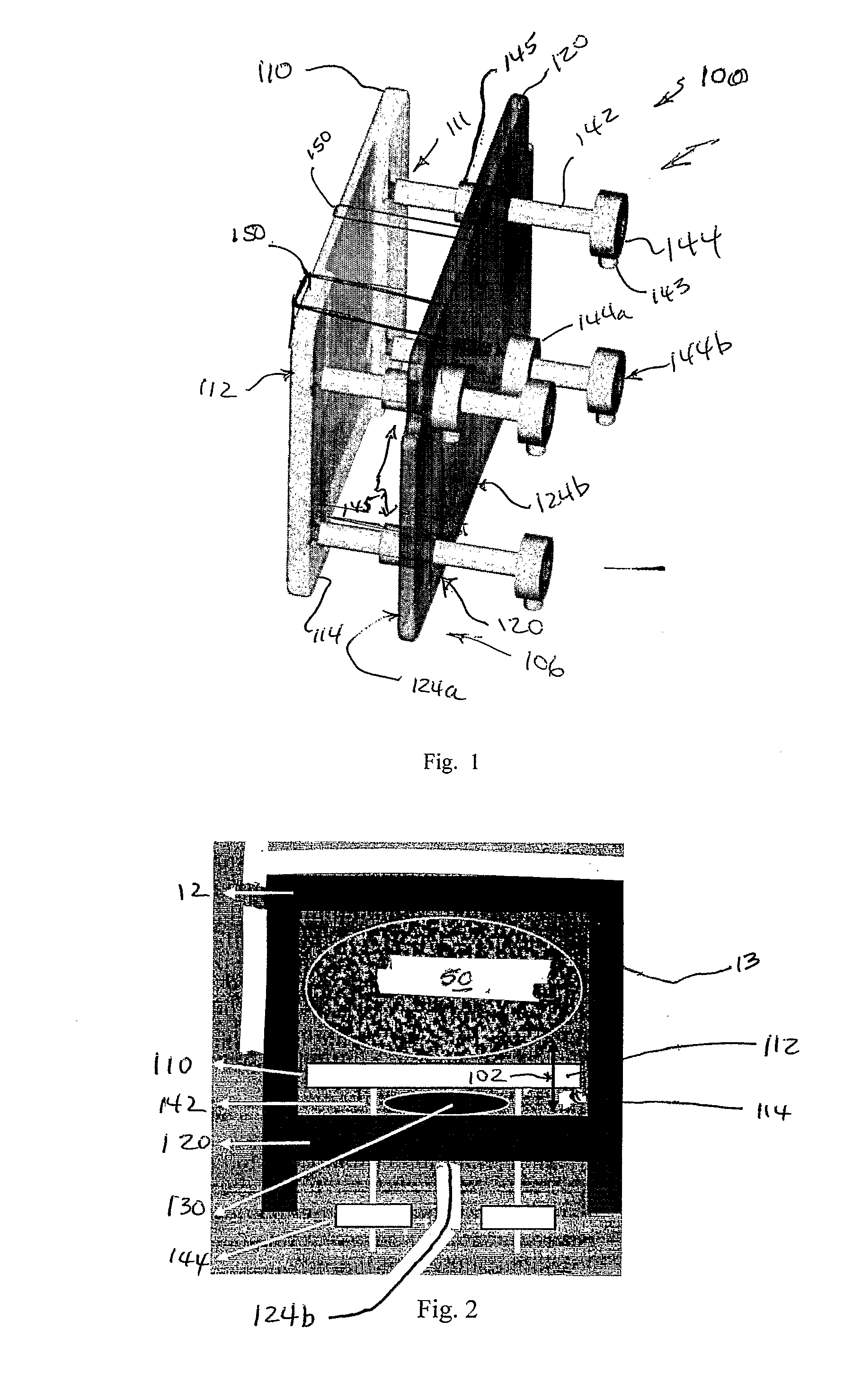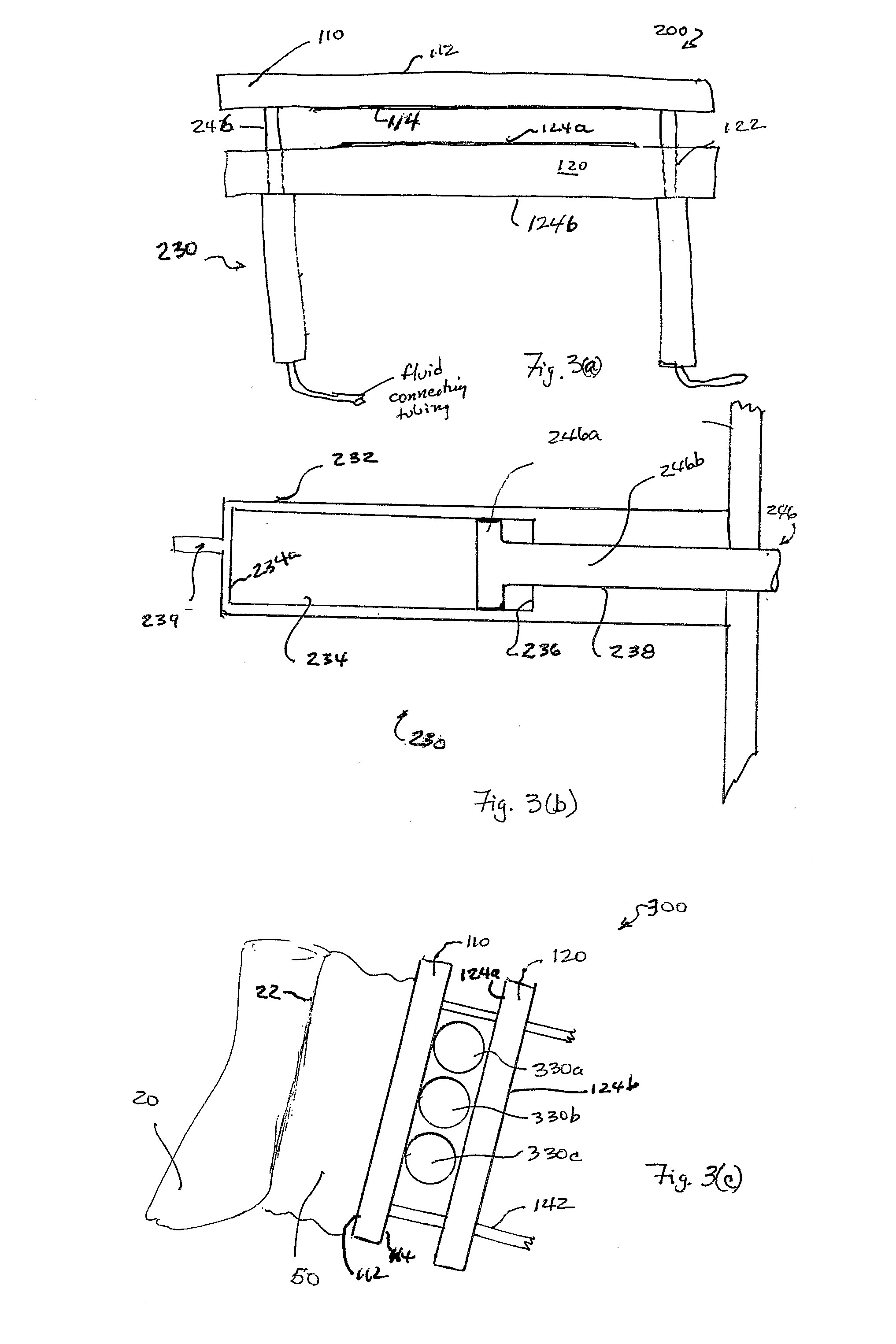Compression device for enhancing normal/abnormal tissue contrast in MRI including devices and methods related thereto
a compression device and contrast technology, applied in the field of magnetic resonance imaging, can solve the problems of potentially life-threatening, malignant, and difficult to detect tumors that are too deep or too small, and achieve the effects of reducing the compressive force on the target tissue, and maintaining the pressur
- Summary
- Abstract
- Description
- Claims
- Application Information
AI Technical Summary
Benefits of technology
Problems solved by technology
Method used
Image
Examples
example i
SENC MRI
[0130]The Strain Encoded (SENC) MRI technique was introduced to measure local strain distribution of deforming tissues. In SENC MRI, the magnetization of the object under examination at point p and time t is modulated in the z-direction with a sinusoidal pattern with the spatial frequency, ω(p,t). The z-direction here is defined as the direction orthogonal to the imaging plane. Once induced, this pattern lasts for a fraction of a second, during which, if the tissue is deformed, the frequency ω(p,t) proportionally changes with the degree of deformation at the pixel p. The resulting image intensity at this pixel is given by
I(p_,t)≈12ρ(p_,t)S(ωT-ω(p_,t)),(1)
[0131]where p(p,t) is a term representing the proton density of the voxel including the T1 relaxation effect, S(ω) is the Fourier transform of the slice profile determined by the envelope of the applied slice selection RF pulse and ωr is called the tuning frequency, which is determined during the image acquisition by an appl...
example 2
[0148]A phantom experiment was used in order to test the tissue compression device of the present invention. The phantom was made of a silicon gel material prepared by mixing two compounds, A and B (kit 3-1450, Dow Corning). The ratio in the mixture determines the stiffness of the resultant gel: The phantom was composed of a small stiff sphere 1 cm in diameter immersed in a cube made from softer gel material with dimensions 8×8×10 cm3. A top-view of the phantom is shown in FIG. 19. It is worth noting that the stiff inclusion was intentionally placed near the corner of the phantom to test the ability of the system to detect lesions at the periphery of the breast (difficult situation). The stiffness of the inclusion was made very close to that of the surrounding soft gel. In fact, manual palpation on the surface of the phantom did not detect the existence of the inclusion.
Image Acquisition
[0149]The phantom experiment was done on a 3.0T MR scanner (Achieva, Philips Medical Systems, Bes...
PUM
 Login to view more
Login to view more Abstract
Description
Claims
Application Information
 Login to view more
Login to view more - R&D Engineer
- R&D Manager
- IP Professional
- Industry Leading Data Capabilities
- Powerful AI technology
- Patent DNA Extraction
Browse by: Latest US Patents, China's latest patents, Technical Efficacy Thesaurus, Application Domain, Technology Topic.
© 2024 PatSnap. All rights reserved.Legal|Privacy policy|Modern Slavery Act Transparency Statement|Sitemap



